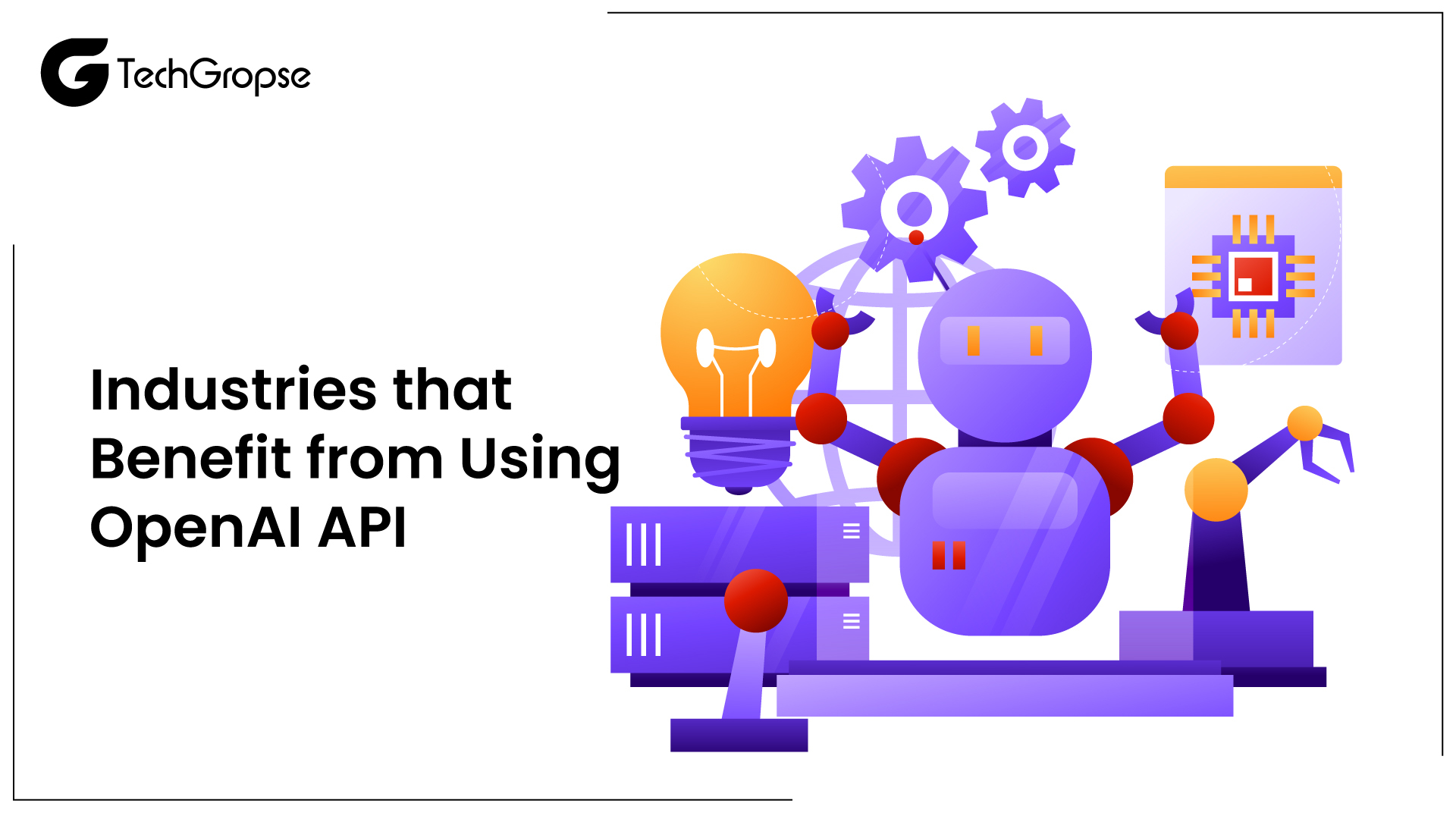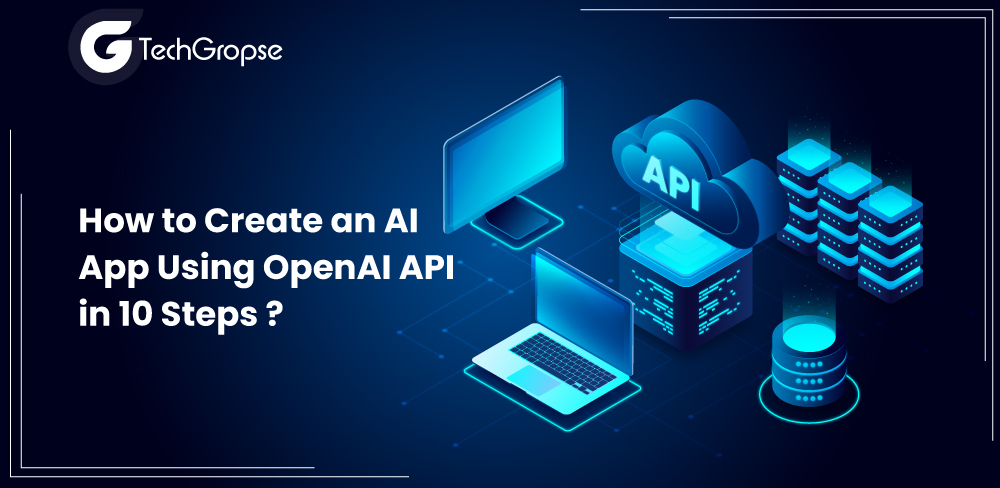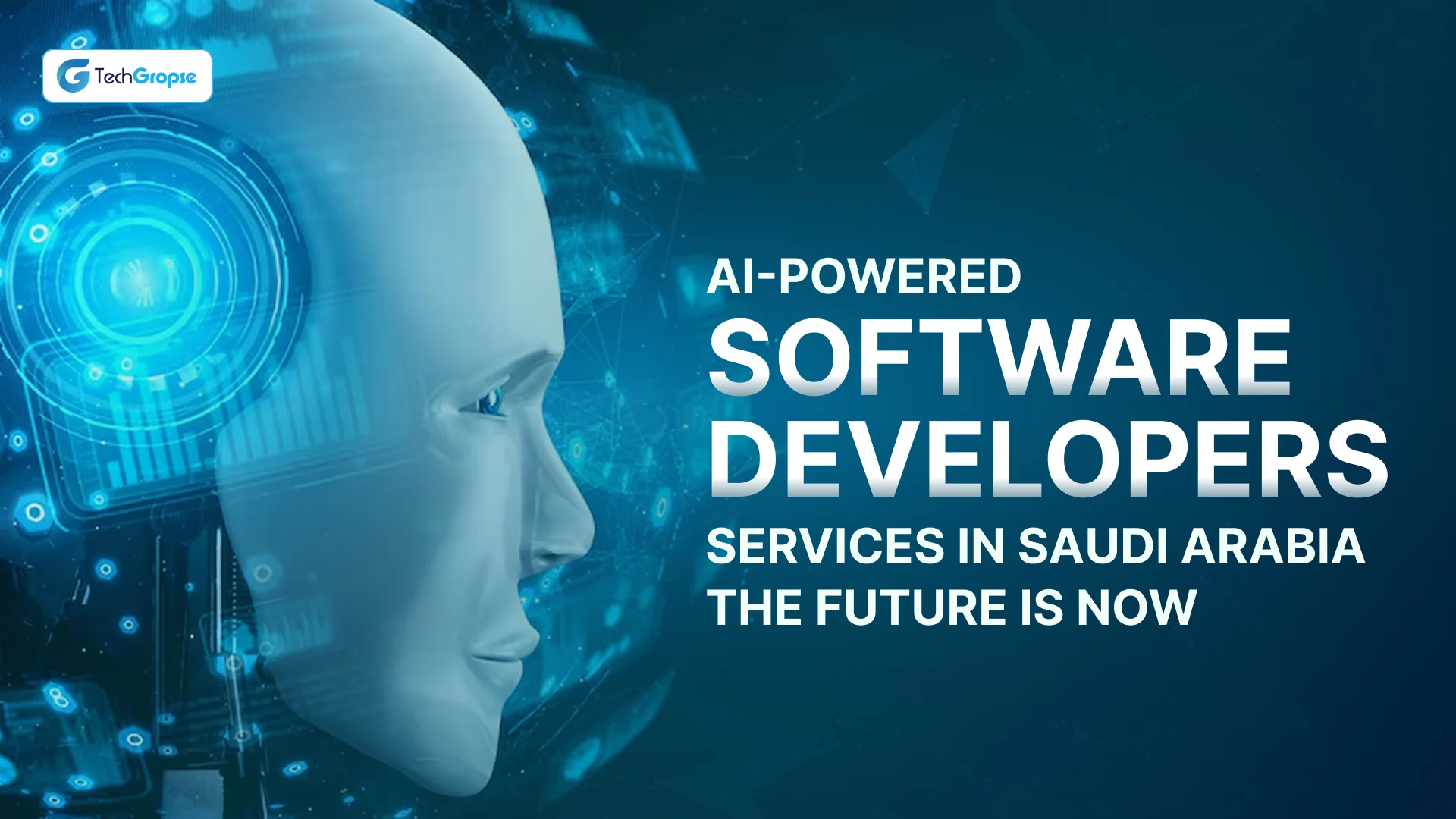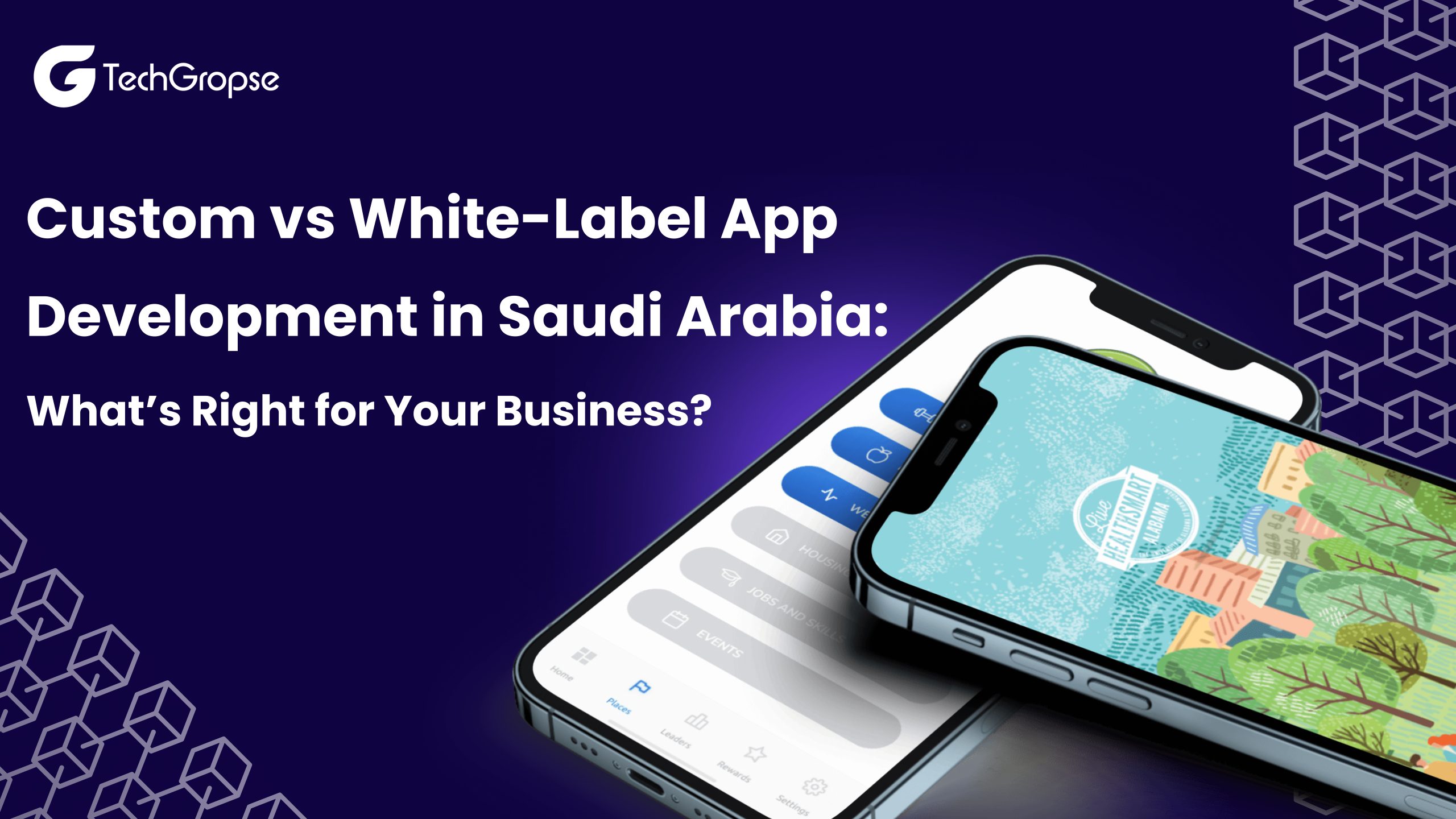Are you looking to create an AI app using openAI API in this virtual world? But still confuse where you should start?
Why wait to much! You will get complete solution here.
Everywhere AI tool is in the limelight, whether it is a content writer, developer, or designer, everyone uses it to bring productivity to their work and build intelligent applications. With OpenAI’s powerful natural language processing capabilities and machine learning algorithms, a mobile app development company can create an AI App Using OpenAI AP that can analyze and interpret huge volumes of data, generate text, and respond to user queries real time.
As the AI market is growing constantly, in 2022, the number was about $119 billion, but by 2030, it is expected to be worth approximately $1.5 trillion. If we move to North America, the AI market will be worth about $147 billion in 2021. Many big companies are planning to use about AI tool to boost their business.
Creating an AI app using the OpenAI API may seem complicated, but it is untrue. Many of us want to know how to create an AI App using openAI API and add interesting features.
By following these 10 steps, developers can easily build their own AI-powered applications:
- Step 1: Research Your Idea and Goal
- Step 2: Competitive Analysis for AI App Development
- Step 3: Choose the best AI Development Company
- Step 4: Essential Features Should Have in Your Custom OpenAI App
- Step 5: Techstack Used for Open AI App Development
- Step 6: Choose Models From OpenAI’s API
- Step 7: Testing and Optimizing the AI App
- Step 8: Deploying the AI App to the Cloud
- Step 9: Train the AI model
- Step 10: Estimating the Cost and Timeline
This guide will explain every step, along with tips and tricks to help developers get the most out of the OpenAI API. By following these steps, developers can create intelligent applications that can help them automate tasks, analyze data, and provide valuable insights to their users.
What is OpenAI API?
OpenAI is known as artificial intelligence, a group of entrepreneurs like Elon Musk, Sam Altman, Greg Brockman, and Ilya Sutskever was introduced on 11 December 2015. The mission of OpenAI is to build a safe artificial intelligence world and ensure that it benefits humanity as a whole.
OpenAI plays a leadership role in developing advanced artificial intelligence algorithms and technologies, including robotics and machine learning. They work on advanced research projects and develop powerful AI models that can learn from expansive amounts of data to perform complicated tasks like language translation, image recognition, game playing, and more.
If we talk about its research work, OpenAI provides a collection of powerful AI tools and APIs that developers can use to make intelligent applications. These APIs include GPT, an advanced language generation tool that can generate human-like text based on given prompts, and an AI model capable of writing code.
Process to Create an App Using OpenAI?
Creating an OpenAI app may be quite tough. Still, with OpenAI in App Development Company, you can be eligible for limitless possibilities for user experience customization and rendering state-of-the-art applications that provide incredible customer satisfaction.
Let’s start to understand all steps to create an AI app using OpenAI API
1. Research Your Idea and Goal
When you plan to build an app, first thing you must do the research about the latest trends, identify your customer problems, and understand the pricing and profit models. Brainstorm your great idea and make a roadmap for it.
Here’show can do to research in-depth and start getting AI development services.
- Think about what kind of problem you want to solve with OpenAI and which AI model will suit your app.
- Understand every model’s limitations and benefits according to your app’s needs.
- Read and understand how to use them. Ensure to check all essential details on your app idea and how to execute it using OpenAI’s API.
- Various openAI models are available for use under some terms and conditions. Understand all essential terms before integrate an OpenAI model in your app.
- Also, share your idea with your group, family members, and investors, and get valuable feedback.
2. Do Competitive Analysis for AI App Development
Want to make your app stand out among the crowd? In AI app development, performing a competitive analysis is important for success. By analyzing the competition, developers can determine their products’ strengths and weaknesses and make knowledgeable decisions on how to improve them.
The analysis should focus on user experience, features offered, price point, and overall market share. Additionally, identifying key aspects in the industry can help developers build significant partnerships and attain valuable insights into best practices for AI app development with Android app development company.
But do you know how to begin a competitive analysis? Have a closer look at the below steps.
- Make a completion of the products that offers same features and services to your app’s idea.
- Check your competitor’s product details, like features, target audience, and pricing. Check positive as well as negative feedback to know your competitor’s product.
- Compare your application idea with your competitor’s functionalities, and latest features.
- Analysis of how the app idea is unique to satisfy the requirement of your target audience.
3. Choose the Best AI Development Company
When you start to create an AI app using openAI API, it is essential to choose an AI app development company; there are a few key factors to consider:
- You must ensure that the company has experience developing successful AI applications, preferably within your industry. Look for their case studies and client testimonials to assess their previous work.
- Consider the team’s expertise in implementing various AI technologies, such as machine learning or natural language processing. They must have a deep understanding of these areas to offer tailored solutions to satisfy your business needs.
- Check if the company has a robust development process with clear communication channels and transparent progress reporting. This ensures that project delivery is on time and fulfils your needs without any surprises along the way.
- Finally, consider the pricing structure and service level agreements offered by the firm.
4. Essential Features Should Have in Your Custom OpenAI App
Once you have done your research and competitive analysis, you must determine the basic and modern features you want to integrate into your AI app solution. Before adding more features, remember that customers always want the details right away, and AI solutions offer that with speed you can also connect with OpenAI in app development services.
| Features | Description |
| Language generation | Generates actual text or speech based on the given data. For instance, to make personalized email responses or social media posts. |
| Predictive modeling | Makes projections based on the last data. |
| Image generation | Build custom graphics based on the input given. Uses OpenAI’s DALL-E model to develop original images. |
| Content generation | Automatically generates quality content like news articles, summaries, product descriptions, and more. |
| Autocomplete | Uses OpenAI’s API to complete words that appear in search bars. |
| API Integration | Integrates your OpenAI app with other APIs to add better features. |
| Analytics | Monitor the app’s usage and organizes data to enhance over time. |
5. Techstack Used for Open AI App Development
It has emerged as a promising field in the technology industry, and hire dedicated developers are embracing different technologies to expedite the innovation process.
| Categories | Details |
| Languages |
|
| Frameworks |
|
| Cloud infrastructure |
|
| DevOps Tools |
|
6. Choose Models From OpenAI’s API
Integrating the OpenAI API into your application is a vital step to creating an AI app using openAI API. It allows your application to leverage the state-of-the-art AI models delivered by OpenAI.
Here are the steps involved in OpenAI API integration:
- Sign up for OpenAI API access and make an API key.
- Select the AI model that fits your application’s needs and use case.
- Install the OpenAI client library in your development environment.
- Establish and authorize your API key using the OpenAI client library.
- Send requests to the OpenAI API endpoint with your input text and accept the AI-generated response.
To ensure a smooth integration, follow the best practices like handling errors and exceptions gracefully, caching responses, and securing the API key.
7. Testing and Optimizing the AI App
Testing and optimizing an AI app is necessary to ensure the app’s functionality, performance, and accuracy.
Here are the steps involved in testing an AI app:
- Describe the test cases and build test data.
- Run automated and manual tests to validate the app’s functionality.
- Use benchmark datasets to assess the app’s performance.
- Fine-tune the AI models and parameters to optimize the app’s accuracy.
To ensure optimal performance, hire mobile app developers to follow best practices like conducting regular testing and monitoring, using production-grade hardware and software, and leveraging automation and machine learning techniques.
8. Deploying the AI App to the Cloud
Deploying an AI app to the cloud allows global accessibility and scalability. Here are some essential steps involved in deploying an AI app to the cloud:
- Select a cloud service provider that meets your app’s needs and budget.
- Configure the cloud environment by setting up the essential resources and dependencies.
- Create and package the app for deployment.
- Deploy the app to the cloud using containerization, serverless computing, or virtual machines.
To ensure successful deployment, follow best practices like adhering to security and compliance standards, monitoring and optimizing resource utilization, and leveraging automation and DevOps practices.
9. Train the AI model
Training an artificial intelligence (AI) model in an app development company involves a rigorous and methodical process to ensure optimal results. The AI algorithm is selected based on the project’s goals, followed by the selection of appropriate training techniques like supervised learning, unsupervised learning, or reinforcement learning.
In addition to technical expertise in AI modelling, app development companies must have experience in software engineering, database design, and quality assurance protocols to ensure valid results at scale. Properly trained AI models can offer significant advantages, including making better predictions over time and delivering more personalized user experiences for customers.
10. Estimating the Cost and Timeline
Estimating the cost and timeline for developing an AI app with OpenAI API involves multiple factors, such as the app’s complexity, the AI models used, and the cloud infrastructure required.
Here are the steps involved in estimating the cost and timeline:
- Break down the app development process into smaller tasks and estimate the time and resources required for every task.
- Factor in the cost of third-party services such as OpenAI API access and cloud infrastructure.
- Calculate the ongoing costs like maintenance, upgrades, and operations.
To manage and optimize cost and timeline, follow best practices, prioritize features based on customer needs, leverage open source and reusable components, and use agile methodologies and project management tools.
Industries that Benefit from Using OpenAI API

Many industries can benefit from using OpenAI’s API, particularly those that require advanced machine learning and natural language processing capabilities. By the year 2026, the market for artificial intelligence is expected to be worth about $300 billion.
1. Transportation & Logistics
When we think about making excellent applications with modern artificial intelligence, the first thing that comes to mind is the transportation and logistics industry. That includes self-driving trucks, buses, cars, and delivery drones. These vehicles use artificial intelligence and machine learning to help them push themselves.
2. Healthcare
Did you know that computers are getting smart and helping doctors take care of people with valid outcomes? They can look at 3D pictures of our insides, including X-rays, and you can inform doctors if something is wrong. They can even help find diseases before they get really bad. When they work with other fantastic technology, such as the Internet of Medical Things, doctors can help people even when not at the hospital.
3. Manufacturing
AI can help factories make things faster and in better way. AI can do many tasks, like ensuring everything is working correctly and fixing things before they break. This is called “predictive maintenance.” AI can look at machines and suggest when they could stop working soon. That way, the factory can correct them before they break and keep making things without stopping.
4. Education
The biggest change has come in the education industry after Covid 19. Robots can help teachers grade your homework and tests. AI can also help you learn better by giving tips on what you need to work on. Whether an interview or an entrance exam, it has proved very helpful.
5. Finance
Artificial intelligence is very helpful in the money world. It can do lots of interesting things, including making personalized investment plans, looking at data for loans, and making the right decisions. In addition, AI can also help detect bad things that try to defraud the system and steal money. M
What are the Advantages of Using OpenAI API for Your Business?
The OpenAI API offers some amazing advantages to businesses using AI technology. Integrating the OpenAI API into a business strategy can lead to enhanced productivity, cost savings, and better results for customers or clients.
Have a quick look at some of the benefits, including
1. Streamline Customer Service
These chatbots can talk to customers and help them with all their questions. For example, a phone company could use OpenAI’s tool to create a chatbot to answer questions about bills, packages, and new deals. This makes customers happy because they can obtain help anytime. Chatbots are a great way for businesses to make their customers happy.
2. Improves Decision-Making
OpenAI has an excellent tool that helps businesses use smart computer programs to make decisions and learn new things. For example, a store can use this tool to read what customers say about their shopping experience. The tool can find patterns in people’s complaints and inform the store what they need to fix.
3. Cost savings
They offer various affordable options for all kinds of companies to develop and use AI apps. OpenAI’s API helps make things easier and faster, which means less work for your employees and less money spent on labour costs.
4. Increases Efficiency
It can help businesses save time by doing boring tasks for them. Imagine a bank having to read a lot of long financial reports. That would take more time, But with OpenAI’s model API, the computer can summarize the reports for them. That way, the people who work at the bank can focus on more essential things like calculating how to make smart investments and avoid risks.
5. Offers Competitive Advantage
If a company uses OpenAI’s technology in their business, they can be better than other companies. For example, a news company can use OpenAI’s words program to make news stories and outlines faster and better than other news companies. This can make more people want to read their news, and they can make more money from ads. Also, companies can use OpenAI’s program to look at data and learn new things. This can help them make better plans for selling things and be better than other companies.
Final Thought
OpenAI API is a powerful tool that can help you build high-quality AI applications cost-effectively and timely. Following the 10 steps outlined in this post, you can create an amazing AI app that fulfils your requirements and exceeds your expectations.
Remember to continuously test and optimize your AI app to ensure it delivers the desired results. With these best practices in mind, you can create an AI app using openAI API to improve your business operations and deliver a competitive advantage in a rapidly evolving digital landscape.
FAQ: How to Create an AI App Using OpenAI API
1. What programming languages can I use to create an AI app with OpenAI API?
You can use any programming language that supports HTTP requests to develop an AI app with OpenAI API. However, some famous programming languages used for AI app development with OpenAI API are Python, Java, and JavaScript.
2. Is OpenAI API suitable for all types of AI applications?
OpenAI API is suitable for various AI applications, including natural language processing, machine learning, and deep learning. However, it may not be the best choice for specialized AI applications, such as computer vision or robotics.
3. What is the cost of using OpenAI API?
OpenAI API offers both free and paid plans. The free plan allows you to make up to 5,000 requests per month, while the paid plan starts at $100 per month and offers access to advanced features and higher request limits.
4. Can I use OpenAI API for free?
The OpenAI API is a powerful tool that enables developers to build AI applications and solutions. However, it is essential to note that using the OpenAI API comes with a cost.










